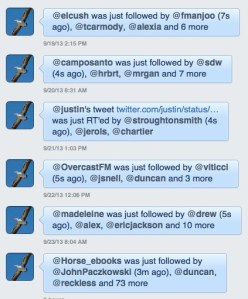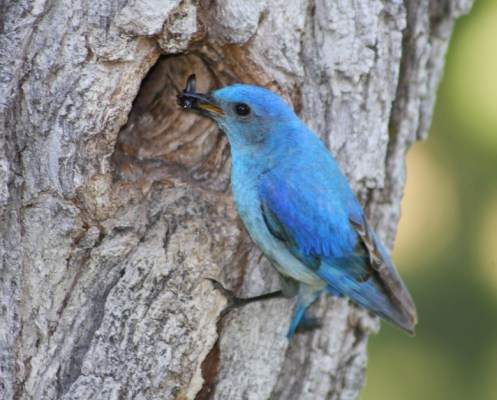Twitter has announced a new push notification in its twitter apps for Android and iPhone that will deliver personalized recommendations for tweets and accounts to follow. The new notification is based on the long-running @magicrecs experiment, which monitored the people you follow to see who they followed and what tweets they were re-tweeting.
The new notification will leverage the unique data that Twitter has at its fingertips to recommend you new accounts to follow, and if the @magicrecs experiment is any indication, it will be scary accurate, fast and genuinely useful. I’ve been a follower of the account for some time now, which is run by a special department at Twitter which creates experiments on the platform. Nearly every recommendation of a tweet or user account has been spot on, and I’ve felt no hesitation telling folks about it. It’s so scary good that I learn about new hires at companies within seconds, sometimes even before the official announcements. And i’ve yet to unfollow any accounts that I’ve followed because of it.
I’ve felt for some time now that the best way to leverage the @magicrecs magic was to weave it into the fabric of Twitter’s apps themselves, and it appears that Twitter agrees. 
“We built this feature based on an experimental account, @MagicRecs. As its bio notes,@MagicRecs “sends instant, personalized recommendations for users and content via direct message”,” says Twitter’s Venu Satuluri, part of the team that built the account. “Over time, we’ve been tweaking the algorithms –– based on engagement and your feedback –– in order to send only the most relevant updates.”
The notification will roll out to users of the apps soon and can be switched on and off in Notification Settings using the toggle ‘Recommendations’.
This kind of experimentation — which leverages Twitter’s data set around the people you follow and how you interact with the service — is exactly what the company needs to continue to do as it strives for ways to keep users engaged and interacting with the service. Especially as it preps itself for IPO and has to begin to answer hard questions about user retention and growth.
As I explained in a piece taking a look at Twitter’s first seven years, one of the primary strengths and weaknesses of the service is that it really is only what you make of it. If you follow quality or interesting accounts that provide relevant content, then you’ll get a decent bit of usability out of it. If you follow crap, you’ll get crap.
At the time, Twitter’s ‘who to follow’ sections were (and are) still buried in the mobile apps, making it difficult to encourage people to follow new relevant accounts:
I make the suggestion to move the who to follow section (especially on mobile) to a more prominent location, or a more organic one. Being able to surface those suggestions subtly in context feels, to me, to be a more effective way of reminding people that there are other people out there producing content that they should see.
All he’ll say is “I really like that idea.”
That idea was crap, I’m sure Sippey was just being diplomatic. But a programmatic push notification based on @MagicRecs does a lot more than surfacing a quasi-random list of people to follow. It provides personal, intelligent recommendations that feel valuable and worthwhile. From the same piece:
But the best recipe for a good Twitter experience isn’t just ‘your friends’ anymore. Sippey says that Twitter has found that the most successful on-boarindg experiences happen when people partake of a ‘balanced diet’ of follows.
“You want to have some humor, you want to have some interests and you want some of your friends. And if we can actually help you craft that well-balanced diet for your home timeline you’ll be a more satisfied user and a happier user.”
This new push notification based on a very clever and effective experiment might be the key it needs to help users develop that well-balanced diet.
Image Credit: William Andrus/Flickr CC
